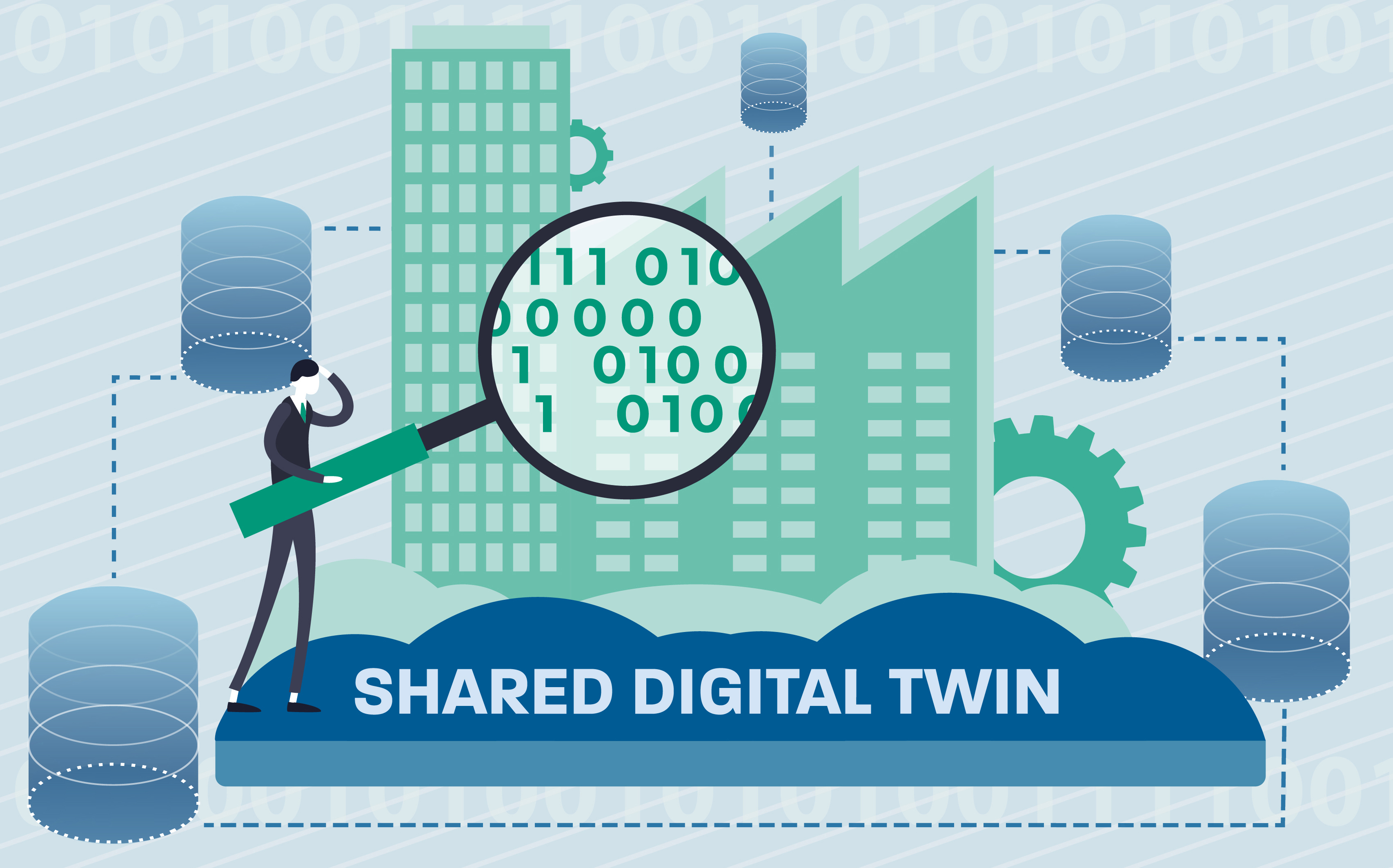"Shared Digital Twin": Using data as a strategic resource

Anyone who operates industrial plants wants to avoid downtimes. Accordingly, maintenance intervals should be adapted as well as possible to the actual need to check the plant. For this, data must be exchanged between the plant operator and plant manufacturer. The Fraunhofer CCIT has developed an Internet-of-Things (IoT) architecture that integrates a business process like this into a "Shared Digital Twin". These data can be shared with other companies based on connectors, with the company providing the data retaining control of data usage and thus data sovereignty.
A digital twin is more than purely a digital copy of an actual object or process: the core of the "digital twin" is data integration. The data can originate from various sources and can also be in different formats. They are made available in a central repository over the entire life cycle of an enterprise asset such as an installation or process. In this repository, a wide variety of analyses can be carried out with the data. These analyses can originate from the fields of artificial intelligence, machine learning or predictive maintenance, among others.
Use of established solutions for integration from exchange
The "Shared Digital Twin" was developed on the basis of the RIOTANA IoT architecture developed by the Fraunhofer ISST. With RIOTANA, meaningful key indicators can be generated in real time from the raw data of ongoing processes (such as vibrations, temperature or friction). With the administration shell of the Industry 4.0 platform serving as the digital twin, the twin framework and interfaces are clearly defined and uniform.
However, "shared" means that the data do not only remain in the company itself, but are exchanged in network structures. For this, the solution uses "IDS Connectors", being promoted as part of the International Data Spaces (IDS) initiative by Fraunhofer and numerous business partners to allow effortless data exchange between different companies in a standardized manner. When using the International Data Spaces, the company providing the data always retains control of the data by attaching usage conditions to the data it shares with cooperation partners. Both companies that share the digital twin can enrich the data with information.
 Fraunhofer Cluster of Excellence Cognitive Internet Technologies CCIT
Fraunhofer Cluster of Excellence Cognitive Internet Technologies CCIT